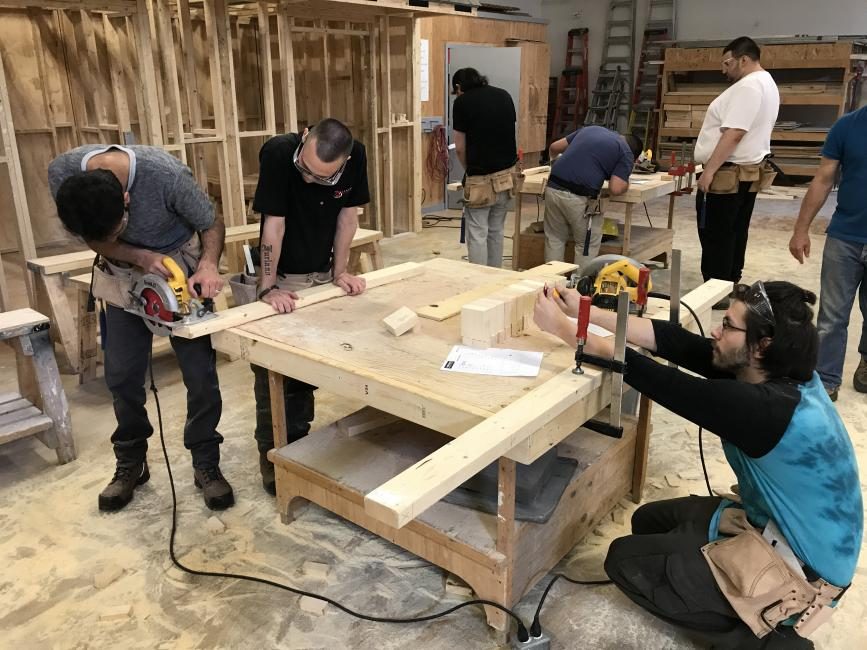A non-profit housing provider in Hamilton, Ont., isn’t just providing homes, it’s helping young people find jobs.
Victoria Park Community Homes recognized that repairs to some of its 2,641 housing units provided an opportunity to offer work and training for young people and others facing barriers to employment.
“We said, how can we not only invest that money in our buildings but in our people as well?” said Lori-Anne Gagne, executive director at Victoria Park.
They chose to partner with the registered charity Threshold School of Building and Wesley, a community-based non-profit offering support for people experiencing poverty and homelessness, to create a program that combined a full-time 12-week construction training course, job search counselling, and the opportunity to be hired by Victoria Park Community Homes to do general repairs.
Participants get training in a range of construction-related skills, including carpentry, drywalling, plumbing and electrical work, and leave the program with basic certifications, as well as work boots, hard hats and tools, said John Grant, executive director at Threshold.
“They’re well prepared to step in. It’s a bit of a leg up,” said Grant “The whole key is… getting them out and getting them employed.”
The program was advertised to residents of Victoria Park’s properties, but was also open to young people in the broader community who faced barriers to employment, including single parents, people from low-income backgrounds or living with mental health challenges.
Dustin Steiger was on probation and having trouble finding work when he participated. After completing the training program at Threshold, the 24-year-old was soon hired by a roofing company.
“Before, I had an idea that I wanted to work but I didn’t really know what field or what I was going to do,” said Steiger. “It’s changed my life immensely. I can’t look back now. It’s amazing.”
The program is still in a pilot project stage, with only a handful of graduates, but has shown promising results.
Grant says the partnerships with social agencies with the same values helps overcome the challenges some young people face when trying to enter the workforce.
And working with employers helps them understand the life challenges faced by participants. “Instead of someone saying, oh well, he didn’t show up today and that’s it, there’s a little more understanding as to maybe why they didn’t show up,” said Grant.
The program requires good planning and strong relationships, especially between sectors that don’t typically work together, but the outcomes can be hugely positive, Gagne says.
“It’s hard work sometimes. Co-ordinating partnerships between multiple agencies is an additional layer of work and co-ordination, but so worth it if we can help people progress through life,” she said.
Steiger has a very positive view of his time in the program. Without it, finding work could have been much more difficult, he says. “I probably wouldn’t be doing as well as I am.”
Similar social procurement programs can be found in other sectors, including the City of Toronto, which used this strategy to hire workers for its Regent Park Revitalization project and Keele Street Hub project.
One report from Buy Social Canada, an organization based in Vancouver that focuses on social procurement, defines the idea as a way to use resources to not only maximize financial outcomes, but also “to achieve overarching institutional, governmental, or individual goals such as environmental and social sustainability.”
The potential for other applications in the non-profit housing sector, the for-profit sector and other areas is huge, says Gagne.
“We absolutely should see more of it,” she said. “The opportunities are just sitting there. All we have to do is make the right links.” ![]()
Read more: Labour + Industry, Housing
















Tyee Commenting Guidelines
Comments that violate guidelines risk being deleted, and violations may result in a temporary or permanent user ban. Maintain the spirit of good conversation to stay in the discussion.
*Please note The Tyee is not a forum for spreading misinformation about COVID-19, denying its existence or minimizing its risk to public health.
Do:
Do not: